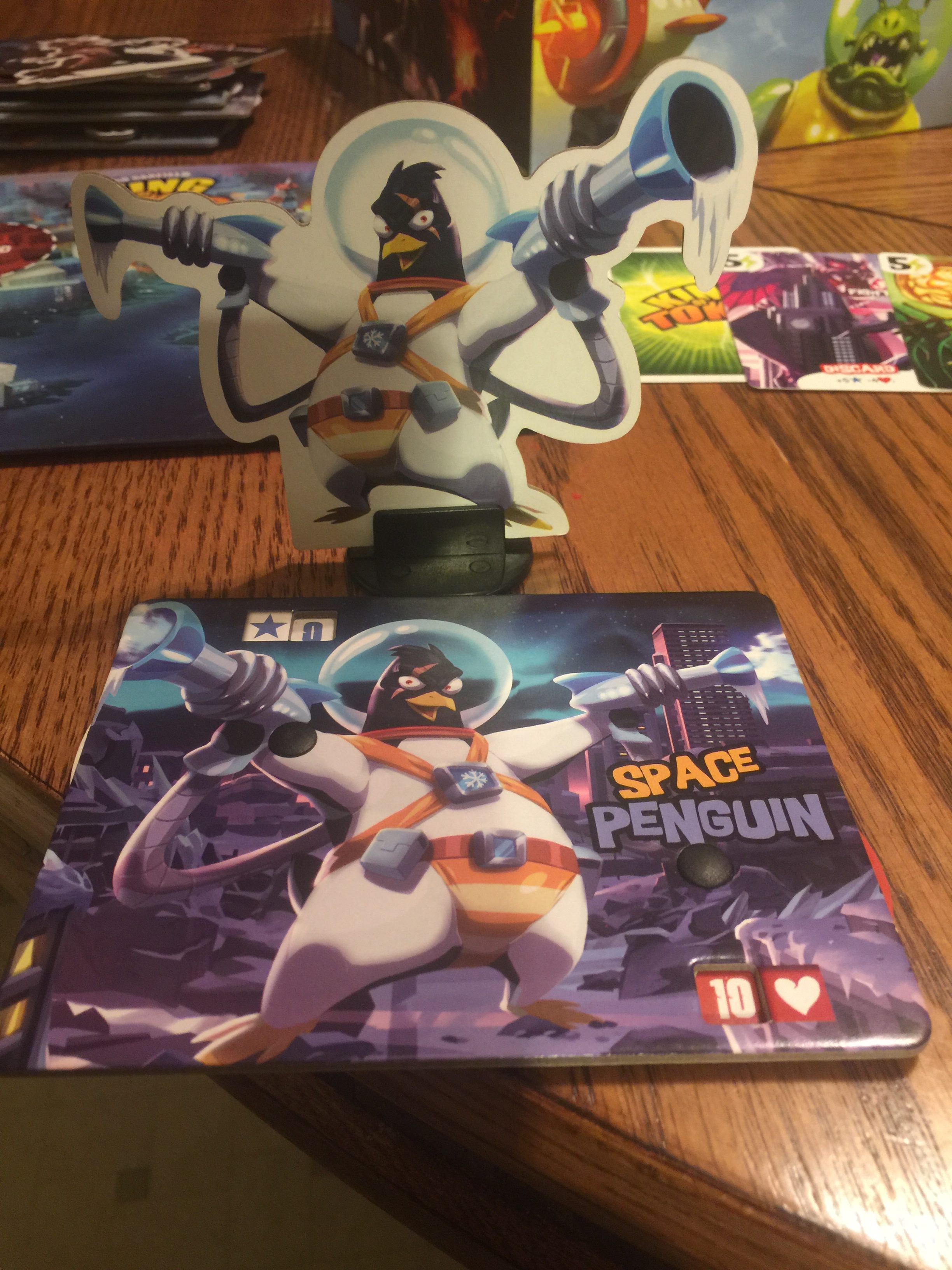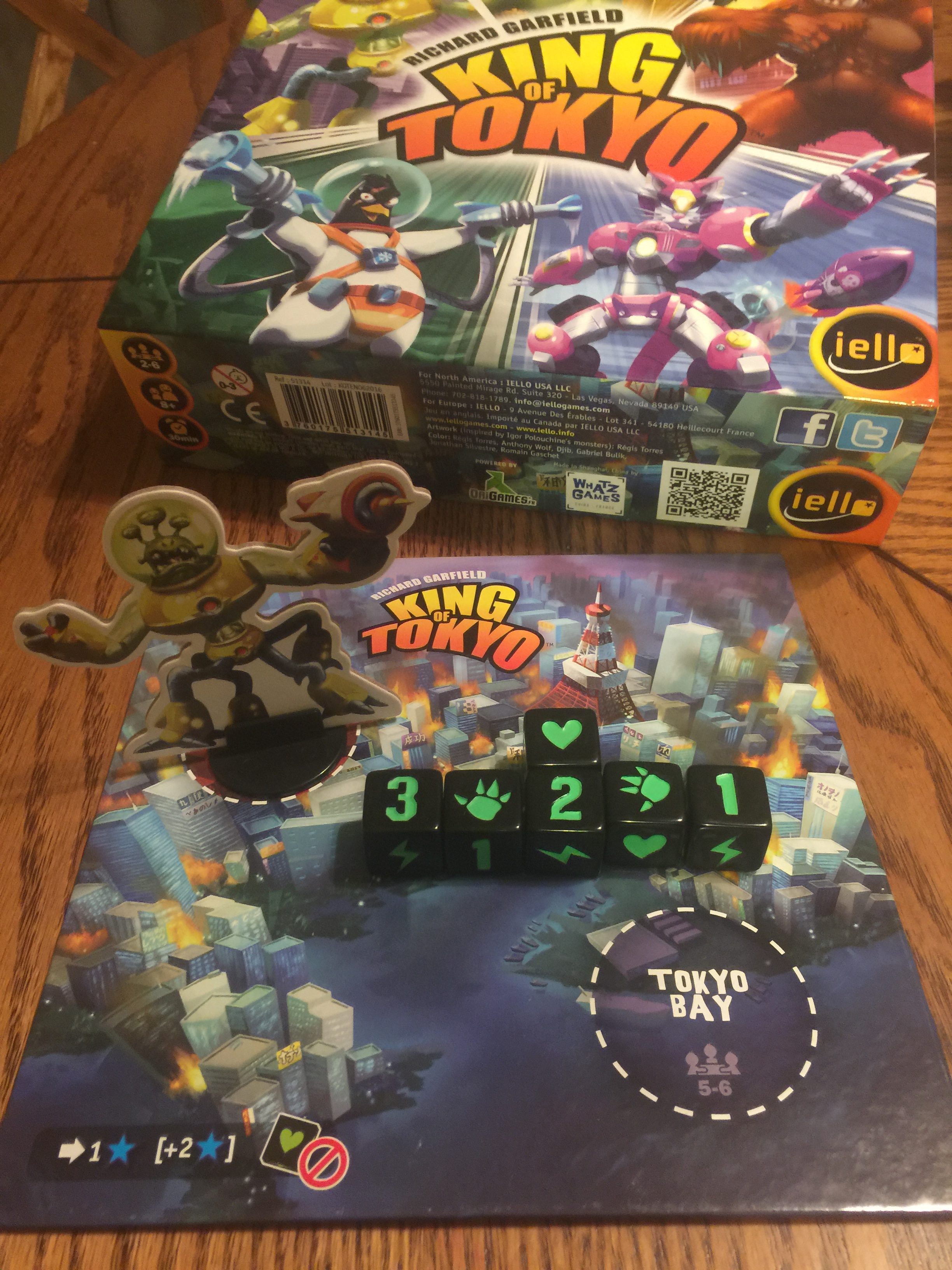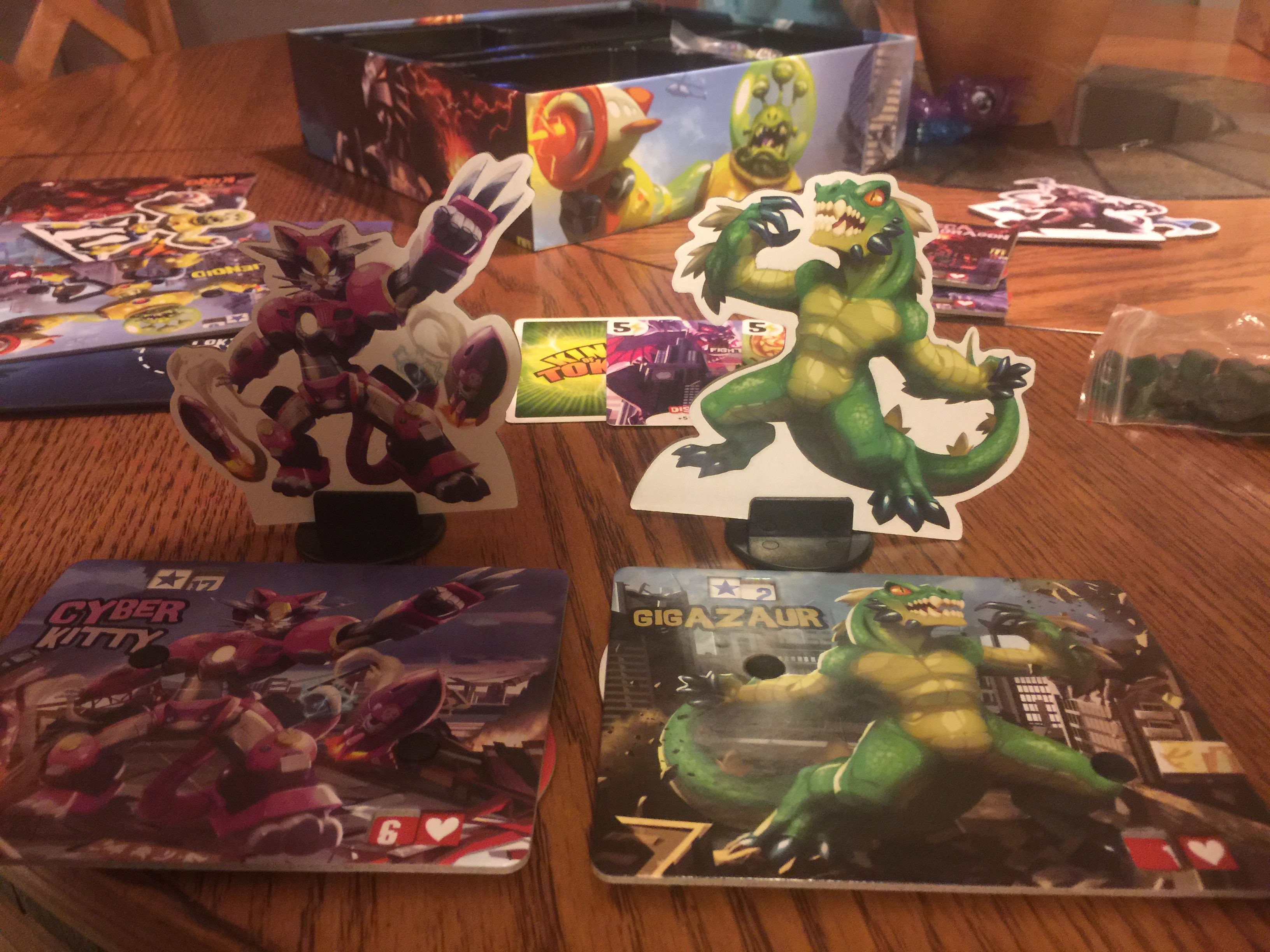King of Tokyo
Today’s Family Board Game Review is of King of Tokyo, designed by Richard Garfield and published by iello. It plays 2-6 players and suggested age is eight and up. Play time is around 30 minutes.
I wasn’t supposed to play this game with the boys. I wasn’t against it, But I had placed a large order of various games for AcadeCon 2016 to use as prizes and ended up getting two of this game by accident. (I did pay for two copies. I just didn’t mean to order two copies.) As I was pulling the games out of the delivery box, JG saw the box and thought the monster art looked cool. Rather than send the extra copy back I decided to give it a go.
This is the newer version of the base game that includes:
- the Bay of Tokyo (if you have 5-6 players you use the Bay)
- updated art
- Cyber Kitty, Digazaur, Kraken, Meka Dragon, and Space Penguin as playable monsters
JG – I like rolling the dice. You never know what they are going to land on.
Jacob – I like attacking other people (Michael – In the game he means. I think)
The basics of the game are that each player assumes the role of one of these great monsters that are clearly homages to Godzilla, Mecha-Godzilla, King Kong and other similar beasts. They are each attacking Tokyo, but they must first destroy each other. You win by taking out the other monsters by attacking their health or by gaining 20 victory points first.
On your turn you roll 6 dice with symbols on them and the results determine what you can do. They symbols represent attack power, regeneration, energy collection and victory point collection. You can roll any number of them (including all) up to 3 times total. After that you read the results and act accordingly.
You use Attack Power to attack the other monsters. If you’re in Tokyo your attacks hit every other monster. If you’re not in Tokyo you can only attack the monster in Tokyo (some cards – see below- may change that).
You use the Lighting Bolt (energy) results to collect energy tokens which you can use as currency to buy cards that are laid out 3 at a time along the board and give you power ups like bonus damage, being able to roll extra times or extra dice, duplicating cards that other players control, raising your max health above starting and so on. Some cards are KEEP cards meaning you place them infront of you and you get their benefit each turn or each time you are able to activate them. Others are a one-time effect you get when you activate it by discarding it. As you buy cards you replace them from the deck. You can also spend 3 energy to wipe the board, discarding the current 3 and laying out all new ones.

Space Penguin is a family favorite. The cardboard game piece has spinning wheels to track victory points (top left) and Health (bottom right).
You use the HEART results to heal from previous damage, but if you’re in Tokyo city you can’t heal.
The other three results are the numerals 1, 2 and 3. If you collect three or more of these results (so three 1s, three 2s or three 3s) you gain victory points for them. Each additional of the same number gives you more. So three 2s give you 2 victory points. Four 2s would give you 3. Five 2s would give you 4).

Some of the cards you can purchase by collecting Energy cubes. The cost is pictured top left. The uppermost card is a one time use card that gives you +4 Victory points.
If there are no monsters already in Tokyo city (start of the game) you spend one attack die to enter. You gain one victory point for entering and if you stay in the city for an entire round (you’re still there when it’s your turn again), you get 2 victory points. Once you’ve entered Tokyo, you stay until someone hits you. You take that damage and then can decide to stay or leave. If you leave, the person that did the damage to you must enter Tokyo claiming a victory point for doing so, but is now the target of all the other attacks. It’s not easy being the King.
Each monster starts with 10 Health points and 0 Victory points. You win by taking out other monsters by reducing them to zero Health OR by gaining 20 victory points. I most often win by gaining victory points, especially with my kids. Neither really likes being in Tokyo (they don’t like getting attacked) so they almost never do damage to whomever is there. JG especially tries NOT to get attack die results and instead will try to reroll and gain energy cubes to buy cards; he loves how the cards do cool/interesting things. So I almost always end up in Tokyo early and stay there and focus my rolls on earning victory points. Jacob enjoys attacking but doesn’t like being attacked so he’s not as aggressive as he’s should be, waiting late in the game before he goes all out in attacking.
Both of my boys enjoy rolling the dice. They set them aside in groups and deliberate over which to keep and which to re-roll. As far as strategy goes, they don’t fully understand how to win (see above) but they really enjoy playing the game, they like that in a way they are both against me (since I’m almost always in Tokyo) and they like the rolling and collecting and buying the cards. JG also likes stacking the energy cubes into pyramids.
Of the games we play currently, King of Toyko is the one that gets played most often. They really like it and I like playing it with them. It’s simple enough to set up and take down that we can start playing in just a few minutes. Each game lasts just long enough that it feels like a family event but short enough to keep their attention spans. I’m curious to see when the ‘change’ happens and they better understand the strategy and start attacking me. Until then, Daddy will remain King of Tokyo!
Highly recommended.
Purchase your copy of King of Tokyo here and help support our show!









